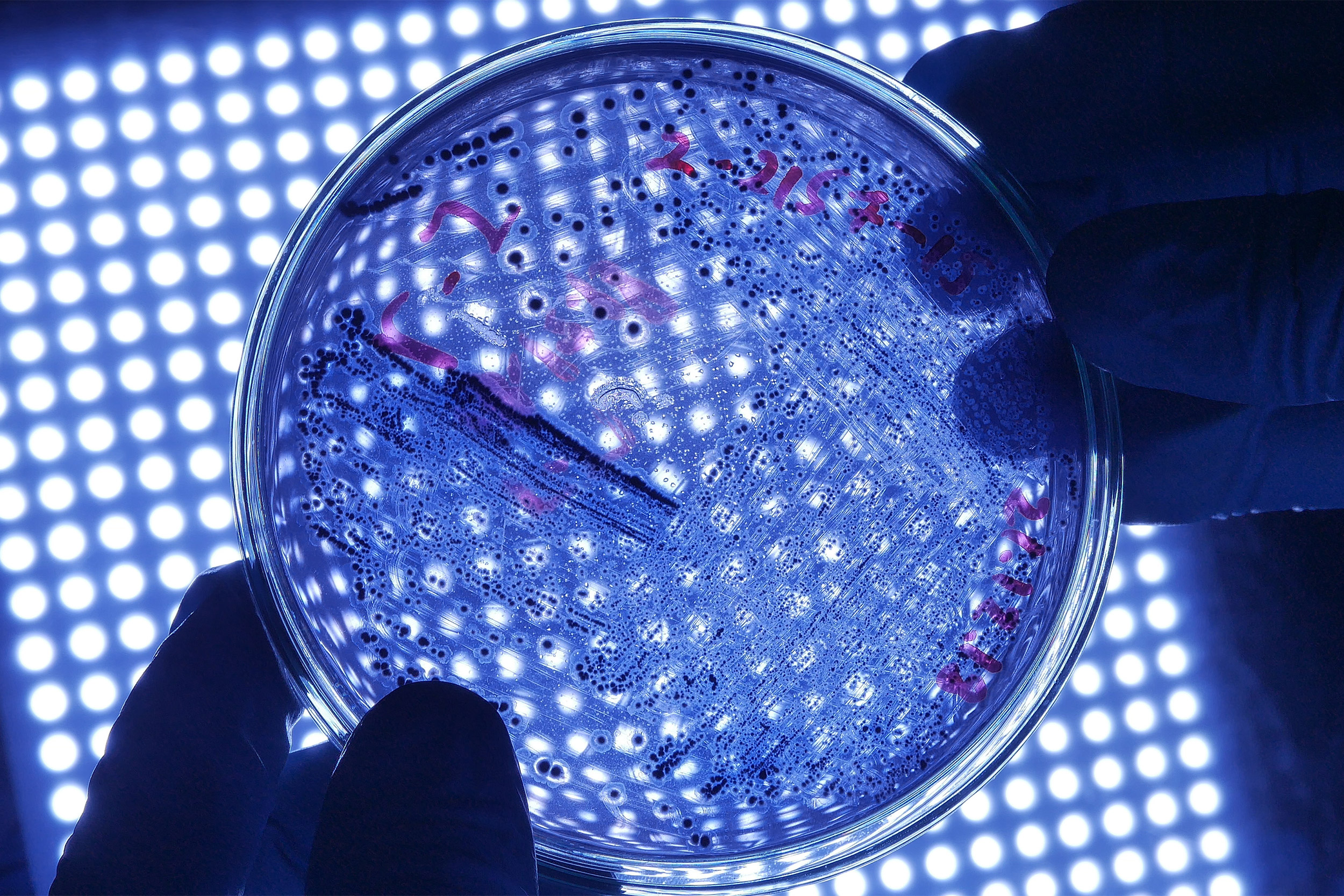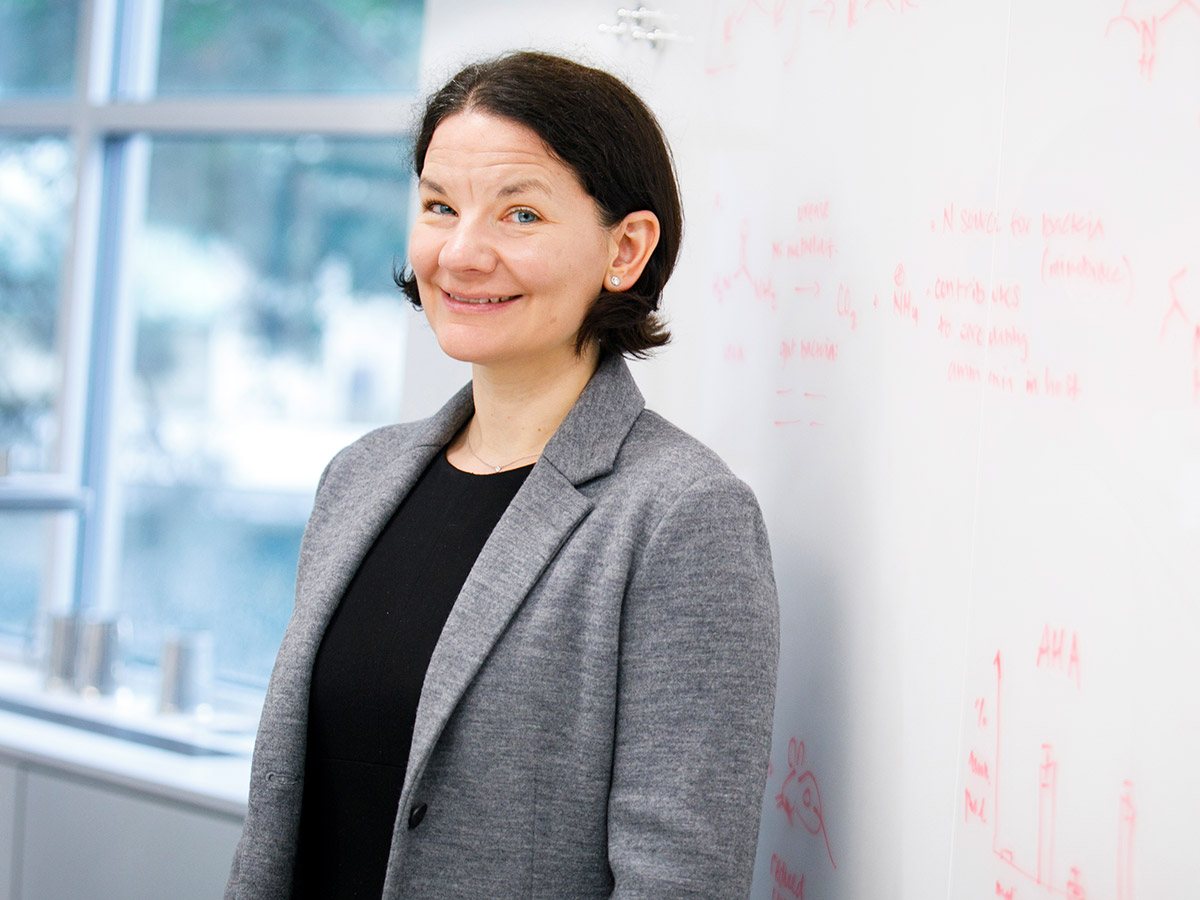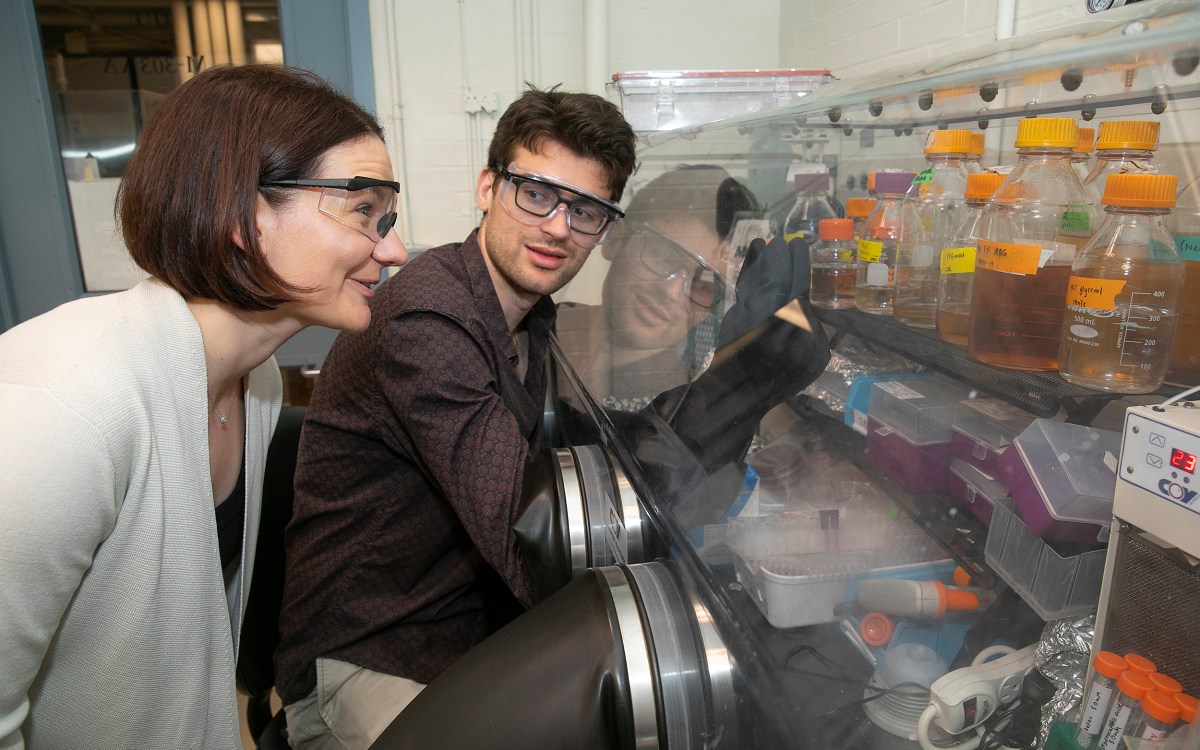
Vaginal bacteria must eat to survive — but how?
Chemical analysis brings understudied microbiome into sharper focus
Like the human gut, the female genital tract is its own complex microbial ecosystem, where billions of beneficial bacteria make their home. The way Harvard chemist Emily Balskus sees it, the vaginal microbiome is an underappreciated, understudied part of the body where critically important chemistry takes place.
The Thomas Dudley Cabot Professor of Chemistry and a Howard Hughes Medical Institute Investigator, Balskus is fascinated by how microbial chemistry influences health outcomes and has particular expertise in the human gut microbiome. For new research published in Nature Microbiology, Balskus pivoted to a less-studied realm — the vaginal microbiome — to provide insight into fundamental metabolic activities that shape a healthy vaginal environment.
Specifically, Balskus and her team, working with Seth Rakoff-Nahoum of Boston Children’s Hospital and Harvard Medical School, examined how vaginal bacteria access glycogen, which is thought to be their key source of nutrition.
“This is biologically important chemistry that might explain why members of the vaginal microbiome community can survive and grow in their unique environment,” Balskus said.
It’s long been known that a healthy vaginal microbiome is usually dominated by a single species of bacteria, often Lactobacillus crispatus, and that overgrowth of other, harmful bacteria can cause complications such as bacterial vaginosis. It’s assumed that lactobacilli rely on glycogen released from vaginal epithelial cells as a carbohydrate source.

More like this
But what hasn’t been clear to scientists is how these bacteria access and break down the carbohydrates stored in glycogen. They cannot do so without the help of enzymes, which are proteins with catalytic activity that obliterate large glycogen molecules into pieces small enough for the bacteria to eat. Open questions about this all-important process include: What enzymes are involved and where do they come from — the human host or the bacteria themselves? How do they behave? What substrates do they prefer? Glycogen metabolism is likely key to vaginal symbiosis, and the study of it could provide insights into factors that make bacterial strains in the genital tract happy and healthy.
In their research, Balskus and colleagues studied six candidate glycogen-degrading enzymes encoded in vaginal bacterial genomes and present in the bacterial communities of female genital tracts. None had been investigated in a lab setting before. The analysis revealed that these enzymes can indeed break down glycogen, but also uncovered differences between enzymes from different types of vaginal bacteria.
Some of the enzymes, including all the ones from lactobacillus, were active in an acidic environment, or a low pH, which is a parameter also associated with improved vaginal health; others were more susceptible to small-molecule inhibitors, which provided hints to how scientists might develop drugs that block their activity.
The findings show that multiple types of vaginal bacteria produce glycogen-degrading enzymes and can metabolize glycogen as a result. With the medical field’s growing interest in using probiotic strains as supplements to support beneficial bacterial, Balskus’ work further suggests that glycogen metabolism, as indicated by the presence of these enzymes, may be an important consideration for selecting more targeted vaginal probiotic strains. It may also be that acidic conditions help lactobacilli out-compete other, harmful bacteria.
Balskus said the study underscores how chemists are important contributors to fully understanding the human microbiome. While much of microbiome science comes from the power of DNA sequencing, just knowing what genes are associated with a certain microbiome can predict only so much about function and health. In this study, the researchers characterized not only which enzymes help vaginal bacteria break down glycogen, but also subtle differences among those enzymes.
“Breaking down a big polysaccharide into smaller pieces is chemistry we understand very well,” Balskus said. “But what I found really interesting about this project was the differences in activity across the different enzymes. The fact that some of them were very acid tolerant, and some of them were not — that’s something we could never have predicted from genetic sequences of the enzymes alone.”
Funding for this work included support from the Bill and Melinda Gates Foundation, the National Institutes of Health, and the National Science Foundation.







